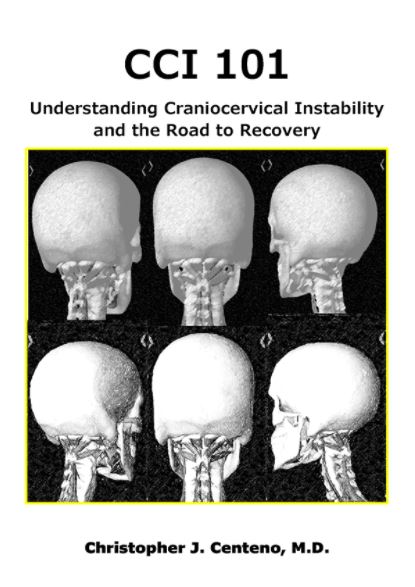You were waiting for the red light to change when you heard the brakes screeching. Out of nowhere a large SUV rear ends you and pushes your vehicle into the intersection. Your neck and shoulder hurt and you’re not processing all the information. Your doctor thinks you have Whiplash. What is Whiplash? What are the major causes of Whiplash? What are the symptoms of Whiplash? What structures can be injured? How are Whiplash injuries diagnosed? What are the long term effects of untreated Whiplash? Let’s dig in.
What Is Whiplash?
Whiplash is a neck injury due to forceful, rapid back-and-forth whipping motion of the head and neck. Whiplash can also be described as “an acceleration-deceleration mechanism of energy to the neck” (1). The incidence of whiplash injuries varies greatly between different parts of the world. For example, in Quebec Canada incidence is as high as 70 per 100,000 (2). It is estimated that there are 1,000,000 cases of whiplash per year in the United States. Whiplash is common and most likley will affect you, your family members or someone that you know.
Major Causes of Whiplash?
Whiplash injuries occur primarily in rear impact motor vehicle crashes (3). They can also occur when someone’s head or neck is suddenly and forcefully thrust forward unexpectingly. Examples include:
Skiing or snowboarding accidents
Contact Sports (lacrosse, football, martial arts, boxing)
Bicycle Accidents
Amusement Park and Water Park rides
Slip and Fall Accidents
What Are the Symptoms of Whiplash?
Symptoms can vary depending upon several factors. Whiplash Associated Disorder (WAD) is a term that is increasingly popular. The Quebec Task Force defines Whiplash-Associated Disorder (WAD) as the “collection of symptoms affecting the neck that are triggered by acceleration-deceleration mechanism” (1). There is a classification system that grades patients based on the severity of signs and symptoms.
Grade 0: No complaints. No physical signs
Grade 1: Neck complaint of pain, stiffness, and tenderness only. No physical signs.
Grade 2: Neck complaint and musculoskeletal signs.
Grade 3: Neck complaint and neurologic symptoms.
Grade 4: Neck complaint and facture or dislocation.
Common Whiplash Associated Disorder symptoms include
- Neck pain
- Muscle cramping
- Restricted range of motion
- Dizziness
- Vertigo
- Difficulty concentrating
- Trouble sleeping
- Fatigue
- Psychological and Cognitive Dysfunction
What Structures Are Injured in Whiplash Trauma?
Whiplash can result in injury to multiple structures. The structures most injured in the cervical spine are:
Ligaments
Ligaments are thick pieces of connective tissue that connect bone to bone. Whiplash trauma is associated with injury to the ligaments in the cervical spine (4). This in turn causes joint laxity and instability. Ligaments also hold your head onto your neck and can be injured. The two most important ligaments are the Alar and Transverse ligament. When these are injured, stretched or torn, a patient can develop Craniocervial Instability (CCI). To learn more about CCI please click on the video in the section below.
Facet Joints
A Facet joint is a paired joint that resides on the back side of the spine. There is a right and left Facet joint at each level of the spine. The Facet joint like other joints is lined with cartilage and surrounded by a capsule. The Facet joint limits motion in the spine and provides stability. Just like other joints in your body such as your knee or ankle joint, the cervical Facets are susceptible to injury
Muslces
The neck is rich in many both small and large muscles that provide neck stability and motion. Whiplash can result in a strain or tearing of the muscles in the neck.
Discs
The neck is composed of 7 boney building blocks that are called vertebral bodies. Sandwiched between each of the bone is a a cushion also known as a Disc. The Disc is critical to the integreity and proper functioning of the neck as it absorbs the daily forces of living. Whiplash can cause injury to the Cervical Discs leading to pain, restriction in range of motion, radiating pain down arm and muscle spasm.
Tendons
Tendons are thick pieces of connective tissue that connect muscles to bone. The are important in the movement of the spine and all joints. Whiplash can cause irritation or tearing of the neck tendons resulting in pain and dysfunction.
Nerves
Nerves send and receive important messages between the brain and body. Important nerves in the neck include the greater and lesser Occipital nerves, Brachial Plexus, and the Cranial nerves. Whiplash can injury important nerves in the neck resulting in pain, headache, cognitive and psychological dysfunction.
How Are Whiplash Injuries Diagnosed?
A complete history and physical examination are essential. If the whiplash occurred due to motor vehicle accident additional questions may include.
- Did you have your seatbelt on?
- What was the position of your head at time of impact?
- Did you have you foot on the brake?
- Where both hands on the steering wheel?
- Did you hit your head on the steering wheel or dashboard?
- Did you sustain loss of consciousness?
Additional tests that may be ordered include:
Flexion/extension neck x-rays
A special set of x-rays that looks for instability of the Cervical spine. X-rays are taken in the neutral position, forward flexed and extended backwards. Damaged ligaments can compromise the stability and integrity of the Cervical spine.
MRI Cervical Spine
X-rays evaluate bone. They are great for evaluation of fractures. Whiplash however is associated with injuries to muscles, tendons, ligaments, Facet joints, and discs which can not be evaluated with x-rays. Magnetic resonance imaging (MRI) evaluates all these structures and can be very useful in identifying Whiplash related injuries.
Digital Motion X-ray
MRI and x-rays are static radiographic tests. They require that you are still without any movement as the later will compromise the integrity of the study. If you have ever had an MRI you are well aware the MRI tech that sternly warns you to stay still during the examination. Unfortunately, the stability of the Cervical spine is poorly assessed in a static position. Digital Motion X-ray (DMX) addresses this very issue. DMX is a live x-ray recording of the neck as it is put through different maneuvers such as bending forwards, backwards and to the side. Measurements are taken which can evaluate the stability of the spine. DMX is especially useful in the especially of Craniocervical Instability (CCI). To learn more about Craniocervical Instability please click on link below:
What Are the Long Term Effects of Untreated Whiplash?
Whiplash is a significant injury with varying rates of recovery depending upon severity of injury and treatment. Most studies suggest persistent symptoms in 25-40% of patients after 1 year (6). Other studies report symptoms in as high as 39% of patients up to 7 years after injury (6). The most common long-term effects of untreated Whiplash include:
Chronic Neck and Shoulder Pain
Injuries to the Cervical facets, muscles, tendons, ligaments left untreated can result in chronic neck pain. Some report neck pain and dysfunction in 20-40% of patients for several years after the Whiplash injury with 3-4 % of patients unable to return to work (7).
Restricted Movement
Facet, disc, and ligament injuries left untreated can cause muscle spasm, pain and restriction in range of motion. Treatment is essential to restore normal motion.
Chronic Headaches
Headaches are common and can be debilitating. There are many different types of headaches that can occur after Whiplash injury which include Cervicogenic, Tension, Greater Occiptial, Third Occipital and TMJ related. Evaluation and treatment is important to identify and treat the actual source of pain. Left untreated the headaches can progress eroding one’s quality of life and function.
Facet Joint Arthritis
Injury to the Cervical facet can lead to joint swelling, tearing of the capsule and compromise of the cartilage lining. If left untreated the injury can process leading to arthritis, swelling and pain in the joint.
Cervical Disc Injury
Cervical Disc Injury if left untreated can lead to disc collapse, pain, muscle cramping, radiating pain down the arm and weakness. These are permanent injuries that do not get better with time.
Loss of Cervical Curve
The normal curve in one’s neck is called Cervical Lordosis. It is a slightly curved C-shape that allows normal function and health of the neck. This involves the discs, facets, muscles, tendons, and blood vessels. Whiplash can result in loss of this curve which makes the spine susceptible to Facet joint and disc injuries. Dr. Katz also demonstrated the blood flow to the brain is reduced when there is loss of the normal lordotic curve (8).
In Conclusion
What are the long term effects of untreated Whiplash? Whiplash is a neck injury due to a forceful, rapid back and forth whpping motion of the head and neck.
Motor vehicle accidents are most the common cause however other causes include skiing, snowboarding accidents, and contact sports.
Whiplash can be graded based upon severity of pain complaints and neurologic symptoms.
Common Whiplash symptoms include
- Neck pain
- Muscle cramping
- Restricted range of motion
- Dizziness
- Vertigo
- Difficulty concentrating
- Trouble sleeping
- Fatigue
- Psychological and Cognitive Dysfunction
Structures that can be injured in Whiplash include ligaments, Facet joints, muscles, discs, tendons and nerves.
Whiplash is diagnosed by history, examination and when appropriate radiographic tests which may include x-rays, MRI and digitial motion x-rays.
Long term effects of untreated Whiplash include chronic neck pain, restricted neck movement, chronic headaches, Facet joint arthritis, Cervical Disc degeneration and loss of curve.
If you have sustained a Whiplash injury please schedule a telephone candidacy discussion with a board-certified, fellowship-trained physician. At the Centeno-Schultz Clinic we are experts in the evaluation and treatment of the neck. From the comfort of your home or office learn what treatment options for whiplash are available for you.
Be sure to download Dr. Centeno’s Orthopedics 2.0 for more information on great ways to address neck pain along with her other musculoskeletal problems
1.Pastakia K, Kumar S. Acute whiplash associated disorders (WAD). Open Access Emerg Med. 2011;3:29-32. Published 2011 Apr 27. doi:10.2147/OAEM.S17853.
2. Rosenfeld M, Seferiadis A, Gunnarsson R. Active involvement and intervention in patients exposed to whiplash trauma in automobile crashes reduces costs: a randomized, controlled clinical trial and health economic evaluation. Spine (Phila Pa 1976). 2006 Jul 15;31(16):1799-804. doi: 10.1097/01.brs.0000225975.12978.6c. Erratum in: Spine (Phila Pa 1976). 2012 Nov 15;37(24):E1537- 40. PMID: 16845354.
3.McConnell, W.E.; Howard, R.P.; Guzman, H.M.; Bomar, J.B.; Raddin, J.H.; Benedict, J.V.; Smith, H.L.;Hatsell, C.P. Analysis of Human Test Subject Kinematic Responses to Low Velocity Rear End Impacts. In SAETechnical Paper 930889; SAE International: Warrendale, PA, USA, 1993.
4.Ivancic PC, Ito S, Tominaga Y, Rubin W, Coe MP, Ndu AB, Carlson EJ, Panjabi MM. Whiplash causes increased laxity of cervical capsular ligament. Clin Biomech (Bristol, Avon). 2008 Feb;23(2):159-65. doi: 10.1016/j.clinbiomech.2007.09.003. Epub 2007 Oct 23. PMID: 17959284; PMCID: PMC2701103.
6. Rodriquez AA, Barr KP, Burns SP. Whiplash: pathophysiology, diagnosis, treatment, and prognosis. Muscle Nerve. 2004 Jun;29(6):768-81. doi: 10.1002/mus.20060. PMID: 15170609.
7. Radanov BP, Di Stefano G, Schnidrig A, Sturzenegger M. Common whiplash: psychosomatic or somatopsychic? J Neurol Neurosurg Psychiatry. 1994 Apr;57(4):486-90. doi: 10.1136/jnnp.57.4.486. PMID: 8164001; PMCID: PMC1072881.
8.Katz EA, Katz SB, Fedorchuk CA, Lightstone DF, Banach CJ, Podoll JD. Increase in cerebral blood flow indicated by increased cerebral arterial area and pixel intensity on brain magnetic resonance angiogram following correction of cervical lordosis. Brain Circ. 2019 Jan-Mar;5(1):19-26. doi: 10.4103/bc.bc_25_18. Epub 2019 Mar 27. PMID: 31001596; PMCID: PMC6458772.





